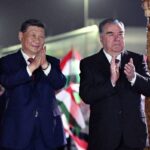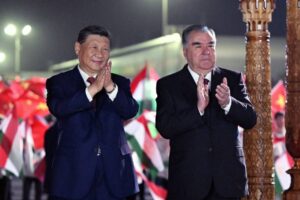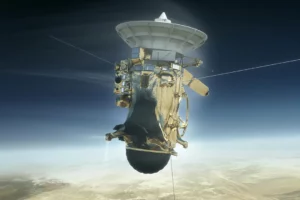MANILA, Philippines — The Philippine government on Monday identified four new military camps, including some across the sea from Taiwan, where rotating batches of American forces will be allowed to be stationed indefinitely despite strong objections from China.
President Ferdinand Marcos Jr.’s administration announced in February his approval of an expansion of the U.S. military presence to four additional Philippine military bases from the five existing sites under the 2014 Enhanced Defense Cooperation Agreement between the longtime treaty allies.
Marcos said the move would boost the Philippines’ coastal defense. It dovetails with the Biden administration’s efforts to strengthen an arc of military alliances in the Indo-Pacific to better counter China, including in any future confrontation over Taiwan.
The new sites identified by Marcos’ office include a Philippine navy base in Santa Ana and an international airport in Lal-lo, both in northern Cagayan province. Those locations have infuriated Chinese officials because they would provide U.S. forces with a staging ground close to southern China and Taiwan, the self-governed island Beijing claims as its own.
The two other military areas are in northern Isabela province and a navy camp on Balabac island in the western province of Palawan.
Palawan faces the South China Sea, a key passage for global trade that Beijing claims virtually in its entirety and has taken increasingly aggressive actions that have threatened smaller claimant states, including the Philippines.
China and the Philippines, along with Vietnam, Malaysia, Brunei and Taiwan, have been locked in increasingly tense territorial disputes over the busy and resource-rich South China Sea. Washington lays no claims to the strategic waters but has deployed warships and fighter and surveillance aircraft for patrols that it says promote freedom of navigation and the rule of law, angering Beijing.
“That’s a trade route, that’s where more or less $3 trillion worth of trade passes. Our responsibility in collectively securing that is huge,” said Carlito Galvez, who heads the Philippine Defense Department.
The four new military sites for American forces are “suitable and mutually beneficial” and will “boost the disaster response of the country” as a springboard for humanitarian and relief work during emergencies, Marcos’s office said.
In a statement, the U.S. Department of Defense said the new locations “will strengthen the interoperability of the U.S. and Philippine Armed Forces and allow us to respond more seamlessly together to address a range of shared challenges in the Indo-Pacific region.”
In a meeting last month with Philippine officials in Manila, however, a Chinese Foreign Ministry delegation expressed its strong opposition to an expanded U.S. military presence in the Philippines and warned of repercussions for regional peace and stability, a Philippine official involved in the talks said at the time.
Philippine diplomats replied that the decision to allow an expanded American military presence was in the Philippines’ national interest and would boost its ability to respond to natural disasters, the official said, suggesting the move was not aimed at China.
The official spoke on condition of anonymity because of a lack of authority to publicly discuss the sensitive issue.
The Chinese Embassy also warned in a recent statement that the Philippine government’s security cooperation with Washington “will drag the Philippines into the abyss of geopolitical strife and damage its economic development at the end of the day.”
The long-seething territorial conflicts continue to be a major irritant in Philippine-China relations. Marcos’s administration has filed at least 77 of more than 200 diplomatic protests against China’s increasingly assertive actions in the disputed waters since he took office last year.
The Philippines used to host two of the largest U.S. Navy and Air Force bases outside the American mainland. The bases were shut down in the early 1990s after the Philippine Senate rejected an extension, but American forces later returned for large-scale combat exercises with Filipino troops under a Visiting Forces Agreement.
The Philippine Constitution prohibits the permanent basing of foreign troops and their involvement in local combat. The 2014 agreement allows visiting American forces to stay indefinitely in rotating batches in barracks and other buildings they construct within designated Philippine camps with their defense equipment, except nuclear weapons.
The Department of National Defense in Manila said the American military presence was not a re-establishment of U.S. military bases in the Philippines, as opponents have asserted.
















